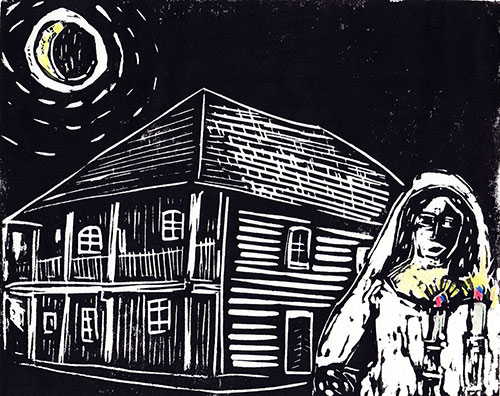Lost Treasures: The Wooden Synagogues of Eastern Europe The Artwork of Bill Farran
Raków, Poland - Original Linocut
Raków, Poland - Original Linocut
Yiddish name: Rakov
Raków was founded in 1567 by Jan Sienieński as a center for the Calvinist Polish Brethren. They advocated separation of church and state, taught equality and brotherhood of all people, opposed social privileges based on religious affiliation, and their adherents refused military service. In the 1630’s there were 15,000 people. However, the town’s population dwindled to seven hundred when the Catholic rulers of Poland expelled the Polish Brethren in 1658.
Jews were a strong presence in the earliest history of the town since the establishment of a Jewish community in 1606. In 1663 the town had 977 residents, including 104 Jews, who were engaged in the sale of cloth and paper. The Raków wooden synagogue was built at the end of the 18th or beginning of the 19th century.
Raków experienced a population growth in the 19th century, reaching 1,232 people in 1827, among them 966 Jews, who were primarily engaged in trade and the sale of alcohol. By 1880, there were 1,979 people in the town, a majority of whom were Jewish.
The Jews of Raków were murdered by the Nazis and buried in a mass grave. In 1945 their remains were removed and reburied in Piotrkow in the Lodz region.
Purchase a print
Original linocut prints are 8x10 inches, and are available either unmatted or in an 11x14 matte.
I also offer matted 5x7 digital prints. These prints are created from high-res digital images and come in an 8x10 matte.
